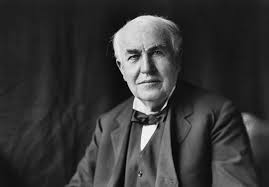AUGUST 31 – 1997 America reacts to the death of Princess Diana; 1897 Edison patents Kinetograph; 1909 Al Reach patents cork-centered baseball; 1916 Harry Butters killed at Battle of Somme
1997 — America reacts to the death of Diana.
I was at a party in Oceanside California when it happened.
The problems of our brethren across the pond aren’t necessarily America’s problems, unless it deals especially when it comes to that silly soccer game they play in Europe and around the world. But the sudden death of the Princess of Wales was so shocking in America it illustrated how ingrained in America’s culture she really was.
Twenty years later USA today pointed out how her face seemed to be everywhere as if she didn’t die. And then there are the conspiracy theories, from her pregnancy with Dodi Fayed’s child, driver Henri Paul who crashed the black Mercedez Benz 280 into a pillar under Place de l’Alma tunnel, was an secret agent for the French, and the testimony of Richard Tomlinson claims that it was a government cover-up. She wasn’t pregnant first of all, and the fact that Fayed was a Muslim didn’t seem to have a history of upsetting the Christian Royal Family.
The driver never had a record of working for any government agency, and Tomlinson would change his testimony of government conspiracies to assassinate the princess was something he misremembered. Then again, maybe someone strong armed him to say that too. The one I like is that the toy company that made Beanie Babies made a Princess Diana Bear Baby, so I suppose it’s conceivable to believe they took out Diana to boost their toy sales. Who knows? Rest in peace, Diana.
If you really are dead, that is of course.
1897 – Edison patents the Kinetograph.
…During the spring of 1883, Thomas Edison hired WKL Dickson, and five years later worked with Dickson to come up with “an instrument which does for the Eye what the phonograph has done for the ear, which is the recording and reproduction of things in motion.” Edison envisioned this projection could be done by shining a light through the microphotographs from inside a cylinder.
The French had already been toying around prototypes. Edward Muybridge, for instance, developed a prototype version of a motion picture by taking pictures of sequential motion of a horse. He set up 24 cameras attached to a trip wire stretched across a racetrack. As the horse tripped each wire, the shutters snapped, and you would get something that kinda resembled something that could be like a movie. I guess. In 1882 Etienne Jules Marey, also from France, used a rotating camera that had a rotating cartridge that would snap pictures.
Edison, however, had a better idea. He used George Eastman of Eastman Kodak’s invention of celluloid film in 1889. Edison demonstrated this kinetoscope to the national Federation of Women’s Club on May 20, 1891. BTW, the cinemograph is the camera, and the kinetoscope is the viewer. Edison would spend a good part of his career in the courtroom, trying to get control over his patents. In 1909, he got together with Biograph and other filmmakers to create the Motion Pictures Patents Company, which was dedicated to protect patents and keeping other players from entering the film industry.
The Supreme Court dissolved this trust, and Thomas Edison left the film industry entirely.
1909 – AJ Reach patents a cork-centered baseball.
…Let me tell you about this great American real quick. Reach is originally from London, but that’s not his fault. He was one of the early baseball greats. He played for the Philadelphia Athletics in 1865, and when the National Association was formed, he helped them win the pennant in 1871. He helped to form the Philadelphia Phillies franchise, in addition formed a sporting goods store, and sold it to Al Spalding.
1916 – Harry Butters becomes a fallen hero at the Battle of the Somme.
…Born in San Francisco in 1892, Butters fought for the British army in WWI. Winston Churchill was so impressed with butters he invited him to his bunker for dinner and champagne. But on August 31, 1916, Butters and his entire gun were under fire from the Germans, and Butters took a direct hit, killing him instantly. He simply wanted three words on his grave: An American Citizen. And in creeper news…
1985 – Night Stalker is caught. Richard Ramirez is almost killed in a mob in east L.A. after being recognized from photographs of him showed up on newspapers and on TV. The Night Stalker, as he was called, killed and mutilated over a dozen women, usually in their own homes. He was sent to San Quentin to go on death row, but died in prison on June 7, 2013, from “natural causes” No other details were released about his death.

